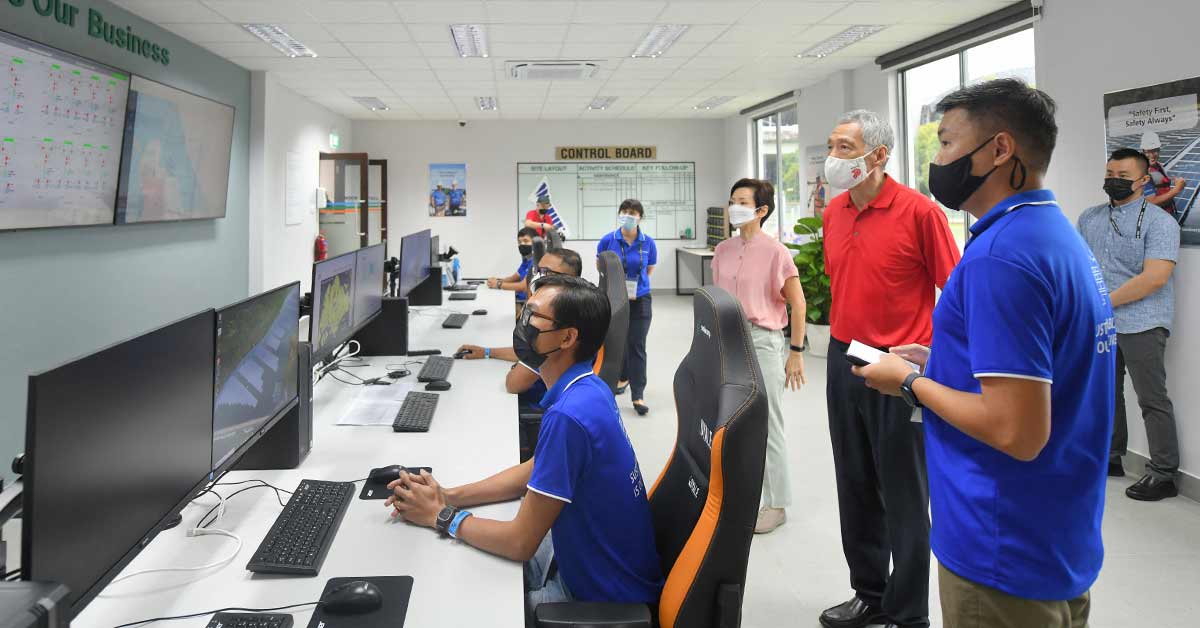As the ASEAN Economic Community (AEC) aims to create a single market integration in Southeast Asia, rising energy demand arising from rapid economic growth will need to be addressed.
According to the 6th ASEAN Energy Outlook, ASEAN’s energy demand will increase substantially by 146 percent by 2040. Aside from energy security issues, the aftermath of this rising energy demand is the increase in greenhouse gas (GHG) emissions, potentially reaching 4,171 Mt CO2-eq in 2040. Therefore, it is a significant concern for the region to sustain the rising energy demand, especially concerning the vulnerability due to the climate change impact in the area.
To address these concerns, the ASEAN Energy Ministers endorsed the regional energy blueprint, ASEAN Plan of Action for Energy Cooperation (APAEC) Phase II: 2021 - 2025, where ASEAN agreed that innovation is a highly crucial component in balancing the region’s energy transition, security, and sustainability.
Under the APAEC, ASEAN has set out strategies that enable relevant stakeholders to tap into the potential of innovations for achieving a regional aspirational target, including 32 percent of energy intensity reduction and 23 percent share of Renewable Energy (RE) in the energy mix by 2025.
The pathway to ASEAN’s energy transition requires conjoined efforts and cooperation from the Government, Industry, and Academe.
Research has found that triple-helix contexts can contribute to strategic innovation by the cross-disciplinary trinity of ‘organisation’, ‘business model innovation’ and ‘financial cash flow’ to address value creation on energy projects.
The triple-helix model has gained prominence as a policy-making tool among the three sectors- Government, Industry, and Academe.
Each sector plays a prominent role, with Academe undertaking research and development, Industries accelerating the commercialisation, and Governments regulating the relevant markets. The model involves the three sectors collaboratively interacting to enhance innovation and cooperation further.
While government policies and targets are essential, it is shown that triple-helix discussions provide a meaningful frame to achieve strategic innovation for the competitive advantage of a clean energy system. Moreover, it is possible to boost clean energy adoption by implementing triple-helix cooperation to create a sustainable energy-climate nexus.
However, ASEAN’s existing triple-helix initiatives at the national and regional level still have significant potential for improvement to reach the optimum output. The problem stems from the initiatives lacking a comprehensive integration of the three sectors, with initiatives only spotlighting either one of the two sectors. These one-sided or bilateral relationships diminish the potential of advancing more incredible energy transition and resilience for ASEAN.
In Thailand, for example, research has shown that although the government has made efforts to strengthen the university and industry collaborations, the collaboration seemed to rely heavily on education. In Malaysia, although based on the Malaysian Science, Technology, and Innovation Indicators Report 2013, the country ranked 18th out of 144 countries in terms of University-Industry in R&D - research on manufacturing industries shows that engagement levels with the industries and community is still not as extensive as expected.
The exact minimum integration of all three sectors is observed at the regional level, albeit a noticeable improvement. For the first time, the 2021 ASEAN Energy Business Forum (AEBF), a high-level energy conference for policymakers and industry’s business leaders, involved the academes through the 1st ASEAN International Conference on Energy and Environment (AICEE). AICEE served as the region’s first scientific conference to share recent research on energy and climate-related issues.
Despite this milestone, a greater and concrete trilateral integration of the three sectors needs to be pursued.
A standard solution and a pre-eminent vessel for triple-helix cooperation are establishing a Collaborative Research Centre (CRC), an independent governmental agency or programme, directly and efficiently linking the three players.
This has been done by several developed countries such as the United States, Japan, Spain (Gijon), and Australia. Within the region, Singapore has also recently established its CRC specifically for energy development- the EcoLabs, and Indonesia have initiated several collaborative programmes, such as the Pasikola project.
Mature and progressive research centres have proven to trigger innovation and act as a driving force for sustainable energy policies at the national level. One of the Flagship projects, conducted by EcoLabs Singapore, involves stimulating and building a modular, sustainable start-up city with start-up technologies and communities that aim to consume less energy, water material, food, and land footprint than modern megacity.
Recently, ASEAN has followed suit with the ASEAN Centre of Excellence for Clean Coal Technology on 30 September 2021, which will serve as a collaborative regional R&D Centre on clean coal utilisation processes to enhance efficiency and environmental acceptability.
In 2019, ASEAN Centre for Energy (ACE) also initiated two network centres to instigate collaboration in enhancing knowledge and expertise on RE and bioenergy development between engineering institutes, academies, and policymakers in the region.
It remains to be seen whether ASEAN’s nascent CRC and its plans will reap the same output similar to other long-established CRCs.
Additionally, ASEAN needs to continue and further encourage more ambitious triple-helix cooperation under the implementation of APAEC Phase II, with the decisive role of ACE as the catalyst to help facilitate such collaboration in the region.
It is not an understatement to say that only when triple-helix cooperation is amplified will ASEAN attain energy transition and resilience to its maximum potential and walk the path to prosperity. The three sectors must continue to collectively work together and unravel the common problem of addressing ASEAN’s energy challenges.
The views expressed in this article are the author’s own and do not necessarily reflect those of The ASEAN Post.



